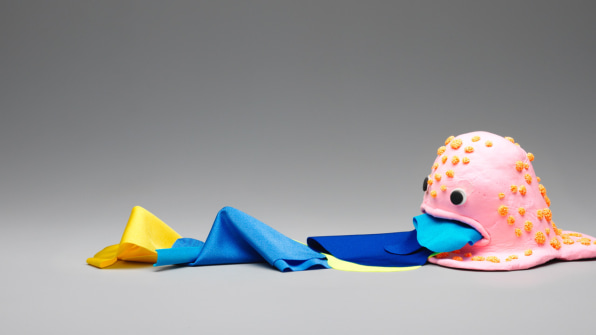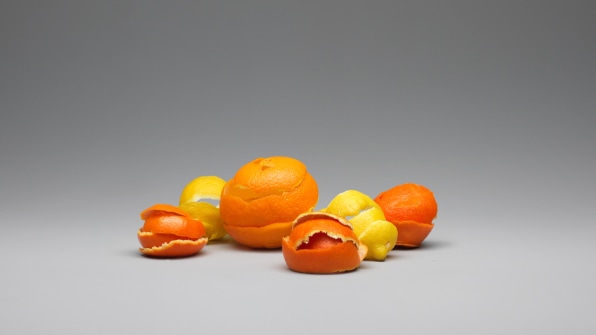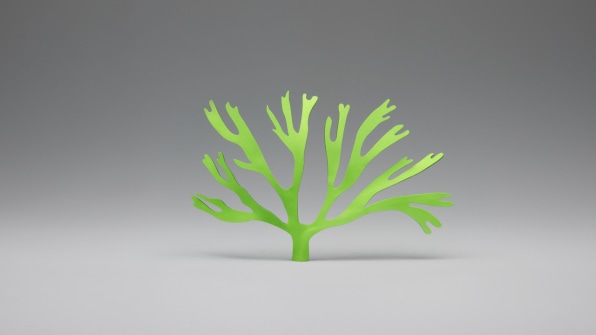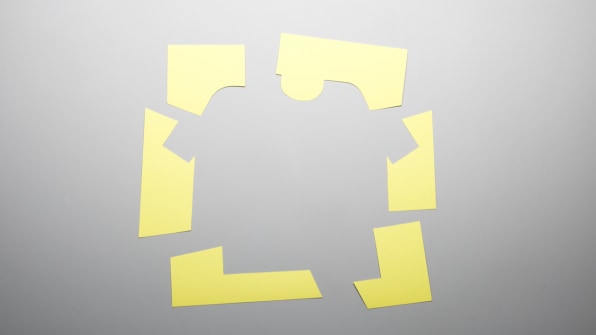How Fashion Has Adopted Techology in Fashion Business
It's the holy grail for the mode manufacture: Can manufacturers seamlessly close the loop on fabric, so an old T-shirt or dress headed for the landfill can be turned into something new? The globe now buys more clothing than always earlier in history; the average American throws out 68 garments in a unmarried yr.
A new €i million competition asked for new ideas to assist the manufacture become more round. "Fashionista or non, clothes are a necessity, and 1 of the biggest challenges facing today's style industry is how to create fashion for a growing world population while protecting our planet," says Erik Bang, project managing director for the Global Change Honour, sponsored by H&Thou Witting Foundation, the nonprofit created by the Swedish fast fashion giant.

Waste–and the unsustainability of the supply chain–is a problem endemic to the entire apparel industry, but especially interesting in the context of fast mode. If clothing was fully recyclable, and made with the fewest resources possible, could we keep churning out new clothing at the corybantic footstep of a fast fashion visitor similar Zara, which makes more than 1 million garments every 24-hour interval, in a way that was actually sustainable?
Hither are the five finalists in the competition, which is now open for public vote.

Polyester-eating microbes
Polyester–now the nearly common material used to make clothes, and made from petroleum equally a raw material–is hard to recycle without losing quality. Just a new blazon of microbe tin eat an old shirt and break the polymer down into a basic raw material that tin be sold back to polyester manufacturers. The process fifty-fifty works on fabrics that are a mix of materials, like cotton and polyester. The upshot is cheaper than making new fabric from petroleum.

Recycling food waste into yarn
Orangish juice manufacturing results in piles of wasted peels and seeds–maybe as much every bit 25 million tons of waste product a twelvemonth. Ane startup has developed a procedure that turns citrus byproducts into raw material that can be spun into yarn. With a working image, the team is fix to start testing the process in other orange-growing regions around the globe.

Algae-based textile
Growing a traditional fabric like cotton usually has an enormous footprint: Information technology can take more 20,000 liters of water to grow enough cotton for a unmarried pair of jeans, and cotton besides uses more insecticides than any other crop in the globe. Quick-growing algae, on the other manus, doesn't require extra water besides the oceans and lakes it grows in, leaving land free for growing food instead. This startup is working on an open-source procedure for turning algae into material.

Turning cotton fiber into new clothes
Cotton is hard to recycle; in the past, if you gave your pigsty-filled jeans away for recycling, they might have been virtually likely to be shredded up for insulation. But this new procedure uses an environmentally friendly solvent to dissolve old cotton clothing into a cotton fiber-like material that can be spun into new fibers–eliminating both waste matter and the bug that come with growing new cotton wool.

A database to track wasted textile on manufacturing plant floors
Every bit much equally 15% of fabric ends up trashed in the process of making dress. This startup is designing a database that tracks the leftover cloth, so other designers can brand utilise of it.
Each of the finalists will be supported in a year-long accelerator, and will split the million-euro prize. "We tin can come across that there are a vast number of great ideas out there, just we also know that access to capital letter, know-how and business organization support is scarce," says Blindside. "Many great ideas never become to see the low-cal of day. With the challenge we want to find these ideas and give them the back up needed to make a difference. … The aim of the Global Alter Award is to move the needle not but with i actor but with the unabridged fashion manufacture."
0 Response to "How Fashion Has Adopted Techology in Fashion Business"
Post a Comment